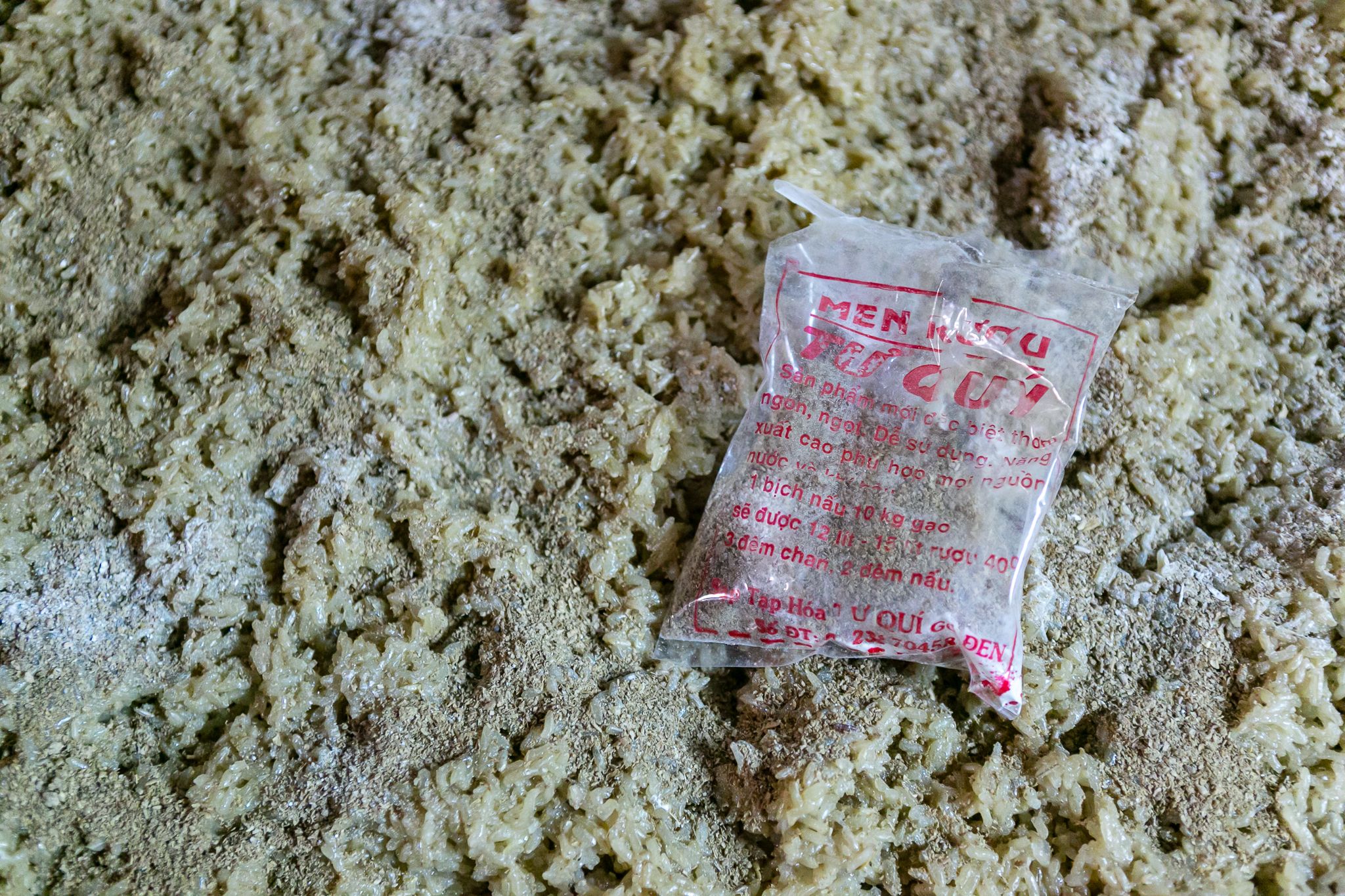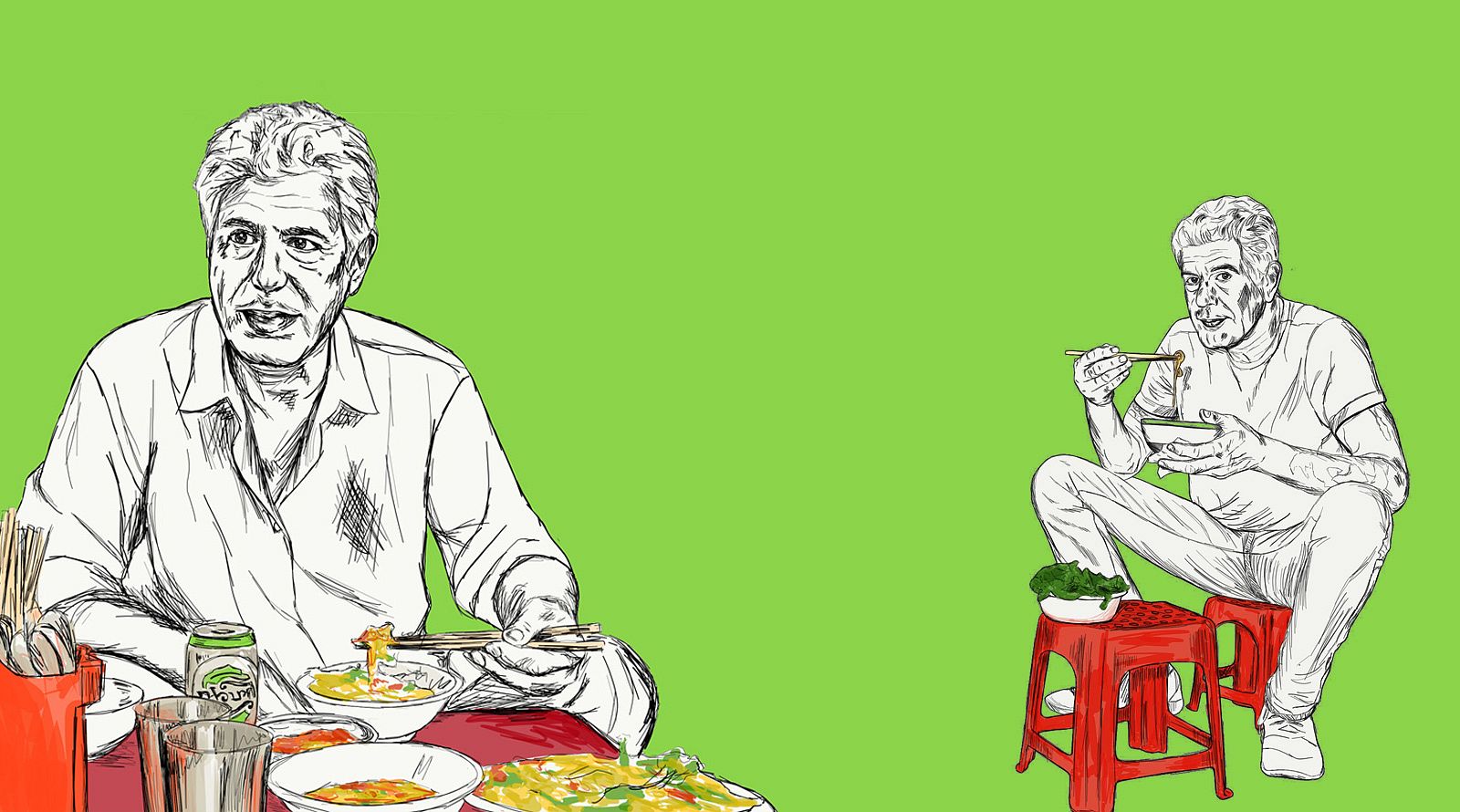“When people know what they are doing, they bring food to life,” says Thu Pham Buser, a New York-based food stylist of her profession.
Thu’s face lights up when explaining how a spritz of water on vegetables or a soft melting of the corner of a piece of gouda can make a meal come alive in photographs.
While her work involves a variety of cuisines, her path to becoming a successful food stylist for some of the world’s top publications began with the realization that “It would mean the world to me and to people in my country to see Vietnamese food styled by Vietnamese people in the world’s magazines.”
“Not here to stay in the kitchen just to make Vietnamese food”
Twenty years ago, Thu would never have imagined that her career would involve food. Her parents owned a simple nhậu restaurant in Saigon and she was forever surrounded by the kitchen’s chaos; washing dishes and vegetables, frying eggs and helping with monotonous duties while patrons grew increasingly rowdy as the drinks flowed outside. “I hated it,” she reminisces with a laugh, admitting that like most kids she would have rather been playing or watching TV.

Photo courtesy of Thu Pham Buser.
Recognizing that the environment wasn’t ideal for a child to grow up in, her parents eventually shut down the restaurant, and Thu went on to study advertising at RMIT. Her first job at a commercial agency couldn't have been further from the food industry. Despite having promised her mom to never be involved in food, it wasn’t long before she enrolled in Le Cordon Bleu culinary school in Spain and re-settled in America. “Life is weird,” she says to summarize the happenstance and changing passions that brought her there.
Needless to say, her mom was not thrilled; for one, she struggled so hard to give her daughter more opportunities. Thu explains: “My mom doesn’t want me to work in the kitchen because she believes that women should not belong only in the kitchen; so for her to have seen me get out into the world already and then go back into the kitchen, she wasn’t happy. But I told her my mission about Vietnamese food: ‘I am not here to stay in the kitchen just to make Vietnamese food, I am here to bring it out into a bigger world for people to see it.’”
Making food pretty is a small part of the job
After graduating from culinary school, Thu moved to New York, with plans to open a Vietnamese restaurant. Despite being a cuisine mecca, New York's Vietnamese food presence is underwhelming, especially compared to cities with much larger diaspora communities like Los Angeles and Houston. The niche was there, and Thu was especially interested to indulge in the emphasis on presentation and creativity that the city embraces.
Unfortunately, the pandemic struck, and Thu knew it was not the time to open a restaurant. So she looked to make connections with critics and food crews for when the moment was right because in America, good PR can rarely be bought. It was during this time that she learned what it meant to be a food stylist by shadowing the best in the business. Thu explains that there is so much to learn and always someone able to teach you if you are willing to listen while being honest, respectful and sincere.


Tet food styled by Thu and photographed by Phillip Le.
Thu remembers living in Vietnam and admiring from afar the work of Charlotte Omnès, a food stylist with decades of experience. When Thu moved to America and was looking to break into the industry, she contacted Omnès out of the blue, offering to help for free if it meant she would have a chance to meet her idol.
Recognizing her passion and talent, Omnès took Thu under her wing, mentoring her as a paid assistant and helping her land her first gigs. Even as Thu’s career progresses, she will occasionally ask Omnès for advice on what to bring to shoots or how to prepare for a specific dish. Thu says that her greatest dream would be to pass this generosity along to someone else, particularly helping other Vietnamese gain experience and opportunities in the field.
Whether it’s a recipe in a popular magazine or newspaper like Bon Appétit or The New York Times; a commercial for a fast-food restaurant; a scene in a movie taking place around a dinner table; or even a shot for a fashion brand where a model is sipping a cocktail, a large food-focused team is required.
For commercial shoots, an art director familiar with the brand guidelines and overall vision will manage the entire production, ensuring the visual style is consistent with the brand’s vision. A prop stylist will prepare all non-food elements in the shoot, from napkins to plates, backgrounds to surfaces. The photographer will, of course, manage the photographs themselves along with the lighting while the food stylist procures the ingredients, cooks the food and arranges so it looks as scrumptious as possible.
Surprisingly, even if the shoot is for a restaurant with an established chef, the food stylist still cooks the dish because chefs know how to make a meal taste delicious and make a great impression when it arrives at a table, but not necessarily look delicious on a photo. Interestingly, the US has strict food laws that require advertisements to only show what is sold, so any of the styling tricks you may have heard of are reserved for movies and television.

Photo via Thu's Instagram.
“Making beautiful food is just 20% of my job,” Thu explains. She must meticulously manage schedules and logistics, coordinate with the many people involved in the shoot and deal with any number of unexpected issues that arise. A mistake in any of these areas could quickly lead to an assignment going over budget.
Finding all the required ingredients can be a challenge as well, especially when publication lead times mean Thanksgiving meals are photographed in spring and Christmas shoots take place in the summer. Securing a pumpkin in May or candy canes in July is tough, especially so for Thu because she is relatively new to the country and must learn a great variety of cultural expectations and vocabulary terms while honing her craft.
And of course, building and maintaining relationships is essential, especially in such a tight-knit industry where everyone knows each other. Thu credits growing up in Vietnam with her success in such a fast-paced and multi-disciplinary field. Having watched her mom forgo a sense of work-life balance and being from a culture that understands hustling is key for survival allows her to say, “Another day, another task, okay!”


Photos courtesy of Amy Scott via The Wall Street Journal.
While making food appear appetizing may be only part of the job, it is an incredibly important one. And despite her professional training, Thu must constantly expand her skills. She explains, “As a food stylist, you walk on set every day and you have to know how to make anything like you’re a master, so the amount of knowledge you need to know to make everything for the first time look perfect like you’ve done it a million times requires massive patience and practice and love.”
As a freelancer who works for commercial clients like food delivery services as well as editorial publications, Thu might be tasked with cooking Indian entrees one day, Spanish tapas the next, and then French pastries. Baking, in particular, has been a challenge. “There are no ovens in Vietnam, I didn’t even know how to cook chocolate chip cookies,” she says. Preparing for such a job thus requires a lot of homework. In her off-hours, Thu tasks herself with learning new dishes, techniques and cuisines, at no small financial or time expense.
Expanding her impact
As Thu became more immersed in the food industry, she was active on social media. Her Instagram page, a must-follow for any foodie, especially one who enjoys Vietnamese cuisine, started “as a platform for me to play,” and has since helped her get work, despite people initially telling her she was wasting her time on it.

Photo via Thu's Instagram.
The page simply reflects what she likes to eat and make. It frees her from the stress of multiple takes and complicated lighting while allowing her to practice her own photography and have fun with the artistry of food. She notes that most people in Vietnam take photos of food with the straightforward inspiration that it looks like something they want to eat. But in the west, there is more emphasis on using food to tell a story.
A perfect example of how food photography can reflect larger themes is an image of bánh chưng that Thu took this past Tet. Dubbed a “bling bling” version of the quintessential holiday dish, jewels and pearls surround and are even placed in the traditional rice cake exemplifying how the New Year is a time people celebrate and hope for riches.

Tet food styled by Thu and photographed by Phillip Le.
Thu’s career trajectory has already revealed her ability to adapt and venture in unexpected directions, so there is no certainty as to what is next for her. She would love to come back to Vietnam and help share some of what she has learned with local publications, helping add elements of subtleness, story-telling and exactitude to the ways dishes are presented. Food styling might not be as widespread here yet, but it’s only a matter of time she thinks and one day she hopes to see publications dedicated entirely to food at the newsstands.
Meanwhile, she would like to expand the west’s understanding and awareness of Vietnamese cuisine. Her Instagram was once followed almost exclusively by Vietnamese, but it has since gained an audience amongst members of America’s culinary industry who have reached out to her for ideas for recipes and articles because of it. For example, bánh mì may be one of the most recognizable Vietnamese foods for global audiences, but few outside Vietnam are aware of the great variety of ingredients the sandwich can feature. A recent post that presented them caught the attention of publishers hoping she could help bring such knowledge to their readers.

Photo via Thu's Instagram.
Beyond more accurate photographs of Vietnamese food, Thu also recognizes a need for Vietnamese recipes actually written by Vietnamese in international media. Traditional foods can be difficult or contain ingredients readers outside of Vietnam are not familiar with, which discourages them from trying. However, she believes there are ways to simplify without substituting as well as embrace technologies, such as instant pots, that may not be seen as authentic but still produce similar results. The development of such recipes will be essential if she opens a restaurant some years in the future as she hopes to do.
Thu’s commitment to capturing Vietnamese food highlights the complexities of global food culture. Having the right ingredients and native-trained chefs is only one piece of successfully presenting a cuisine beyond its borders. Photos are also essential in ensuring dishes and traditions are seen and understood properly along with the stories beyond them. While Thu is proud of what she has contributed and frequently the many people from all around the world that have been essential in her growth, what she sounded most happy to share was that when it comes to cooking Vietnamese food: “Everything I know now is purely from my mom and my grandma, seeing them cook.”

Photo via Thu's Instagram.
Top photos by Phillip Le and Thu Pham Buser, courtesy of Thu Pham Buser.
To see more of Thu's food photography and styling work, visit her Instagram page.















